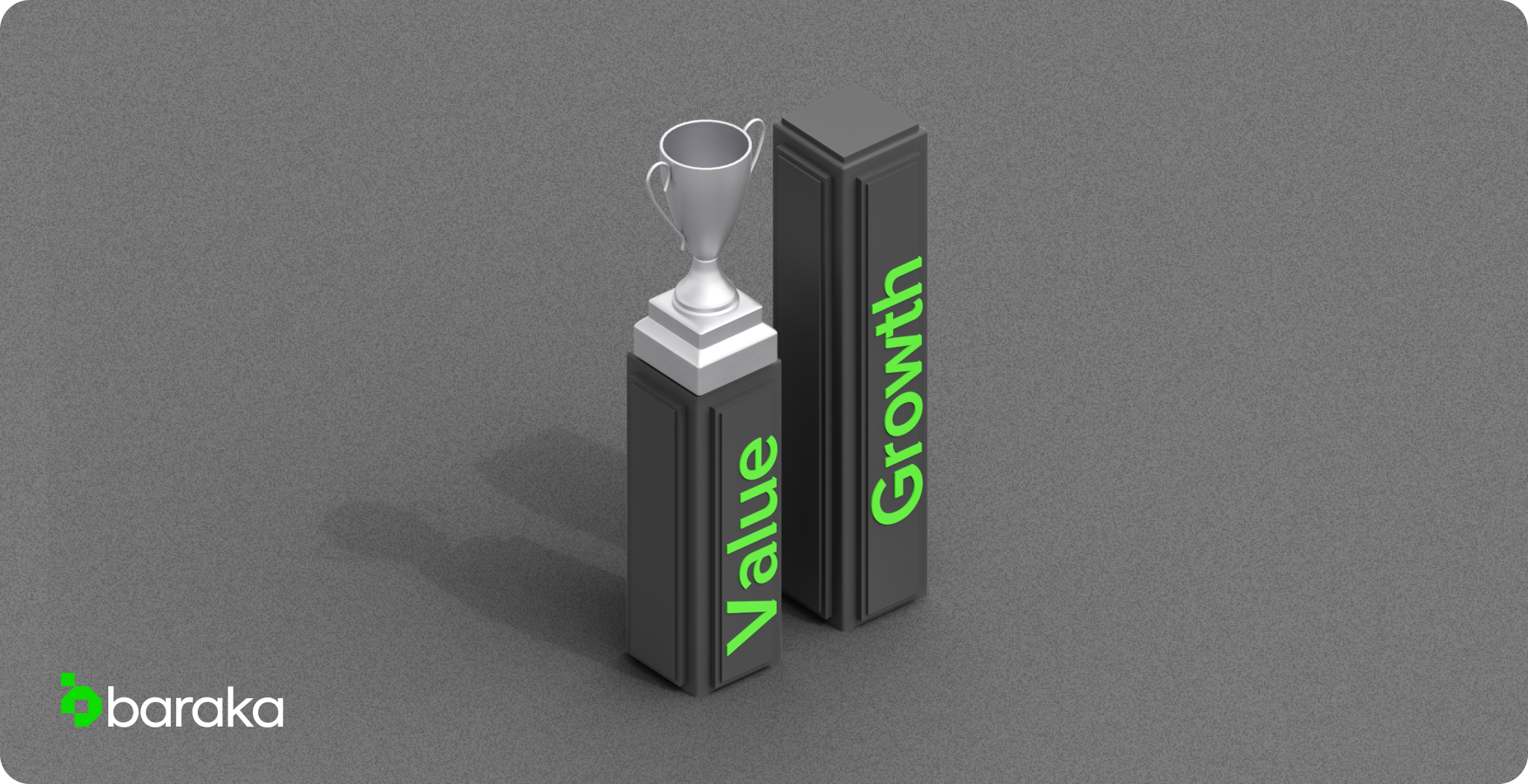If you’re new to stock investing, the terminology may be confusing. It can seem even more puzzling when you’re being presented with one side of an argument, such as why certain stocks are a better investment than others.
The debate about the relative merits of value vs growth investing has raged for years. In this article, we consider the merits and drawbacks of both approaches to stock investing—using the minimum amount of industry jargon along the way.
Key takeaways:
- Value and growth investing represent two different approaches to stock investment.
- They achieve optimal results at different stages of an economic or business lifecycle
- Both are good investment strategies, but each carries particular risks.
- Although they’re often said to be competing strategies, you can blend them together.

Defining value investing vs growth investing
To determine the relative merits of value vs growth investing, we need to start by clearly defining them.
Value investing
This involves buying stocks that appear to be trading below their actual value, often because an established company is underperforming in some way. It might struggle following an acquisition or expansion program, post disappointing turnover/profit figures, or become mired in scandal. The company’s fundamentals should remain sound, but some investors will walk away. This often happens with long-established brands, like financial companies.
Growth investing
This focuses on thriving companies with highly valued stocks. It tends to involve well-known brands during their growth phase, while consistently increasing profits. Technology firms often fall into this category, since tech is rapidly evolving, and market leaders emerge quickly. Demand from other investors pushes the stocks higher until analysts believe they’ve peaked, which may take a number of years.
But aren’t they both good strategies?
They are! Many savvy investors regard the value investing vs growth investing debate as a red herring. Rather than choose one, they follow a twin-track strategy of seeking underperforming value stocks while investing in thriving growth stocks. It’s even possible for stocks to be classed as “blended”—meeting both definitions at once. You can check how individual stocks are performing in our searchable directory.
Value stock may evolve into growth stock if an ailing business turns its fortunes around, or vice versa. But is one vehicle better than the other?
The pros and cons of value investing
Pros
- Everyone loves a bargain. Acquiring stocks that have lost value and then watching them rise again is highly rewarding.
- Value stocks tend to deliver high dividend yields compared to other types of stock.
Cons
- You might invest in a company in terminal decline, one that has over-expanded and needs to contract to survive, or one that’s being consistently mismanaged.
- Value investing is a long-term approach, whereas you can expect quicker results from already-profitable growth stocks.
The pros and cons of growth investing
Pros
- It’s easy for beginners to identify high-performing brands. Think of the market leaders in a particular industry, and the chances are their shares will fall into the growth category.
- If a well-run company is consistently performing well, it’s a safe bet it’ll continue to do so under stable management, making this a low-risk investment.
Cons
- You won’t be the first to spot growth stocks. Dividends tend to be low, and you’ll pay more up front.
- Growth stocks often reinvest profits, rather than paying out dividends. Nasdaq says no dividend has ever been paid to Amazon shareholders.
Reading the market
A key factor to consider when weighing up the rival merits of value vs growth investing is where the wider economy currently stands. A 13-year study of both investment approaches found value stocks outperformed growth stocks for the majority of the time. However, growth stocks performed more strongly during an economic downturn. The study’s author concluded the best option depends on the time period where the stocks were held.
So is there a clear winner?
We started this article considering the rival merits of value investing vs growth investing. And while each has distinct advantages and drawbacks, it’s best to approach both with cautious enthusiasm, diversifying your portfolio and minimizing risk. There’s no right or wrong approach, though prevailing economic conditions might steer you toward one option in the short term.
Any blend of value and growth investing should deliver strong results, while a 50/50 split between value and growth represents the safest option. This also avoids short-term trend-chasing, which might be risky if you’re new to the market and don’t know how to spot a company whose fortunes are ready to soar—or fall. Market experts recommend refining your stock portfolio a couple of times a year, tweaking your investments according to market conditions. And if you’re looking for some expert advice on your next (or first) investment, the Baraka team is here to help optimize your financial wellbeing.

